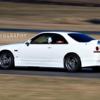Wiring Up A Cams Approved Batt Isolator
Announcements
-
Similar Content
-
Latest Posts
-
Yes...but look at the numbers. There is a tiny tiny fraction of the number of Joules available, compared to what is used/needed. Just because things are "possible" doesn't make them meaningful.
-
By joshuaho96 · Posted
Somehow Vertimass/Oak Ridge National Labs has figured out a catalyst that can convert ethanol into C9-C10 hydrocarbons in basically a single step without ending up with a bunch of ethylene or similar waste products: https://patents.google.com/patent/WO2023224867A1/en I still don't think anything like this will keep us from needing to transition to EVs regardless along with all kinds of other electrification, but things like this will go a long way towards alleviating the problem of how to electrify things like planes. Renewable diesel is seemingly an easier problem as well, Chevron is already running refineries for the stuff and the primary feedstock is tallow and other waste fats from agriculture. -
Ok so I have sorted everything with my uniclutch and i can offer up a bit of feedback and some things that might help others. I found problems with factory damper line. Weird shit and had trouble with peddle adjustment I used this https://au.gktech.com/products/r33-gts-t-skyline-braided-clutch-line?_pos=2&_sid=22b01b9b9&_ss=r Also when adjusting peddle leave a bit of play. You can get into a over stroke condition easy.. Make sure you can push the slave forward after adjusting to confirm fluid can return to master then you will need to pump it up heaps…..not sure why but that’s how it is. last thing the splined adapter is machined perfectly. If your input shaft is old like mine was I would put a bit of valve grinding paste on it and stroke it like a 15 year old. Just to give it a tad more clearance and to better match it to the spline. reason is on a near flat shift I have had situation where the peddle returns a millisecond after you lift from the clutch. No slip or anything but I reckon this is due to tolerance on the spline being way tighter than stock clutch and binding for a sec. I think this will go away but also my spline was old. Box is old so I guess I should have checked better. It’s a super neat fit. it feels light as and holds awesome without any noise
-
My Fuga Hybrid is JDM, 2014 model but very similar to the V37 from the looks of things..same platform just physically larger and very comfortab;e
-




Recommended Posts
Create an account or sign in to comment
You need to be a member in order to leave a comment
Create an account
Sign up for a new account in our community. It's easy!
Register a new accountSign in
Already have an account? Sign in here.
Sign In Now